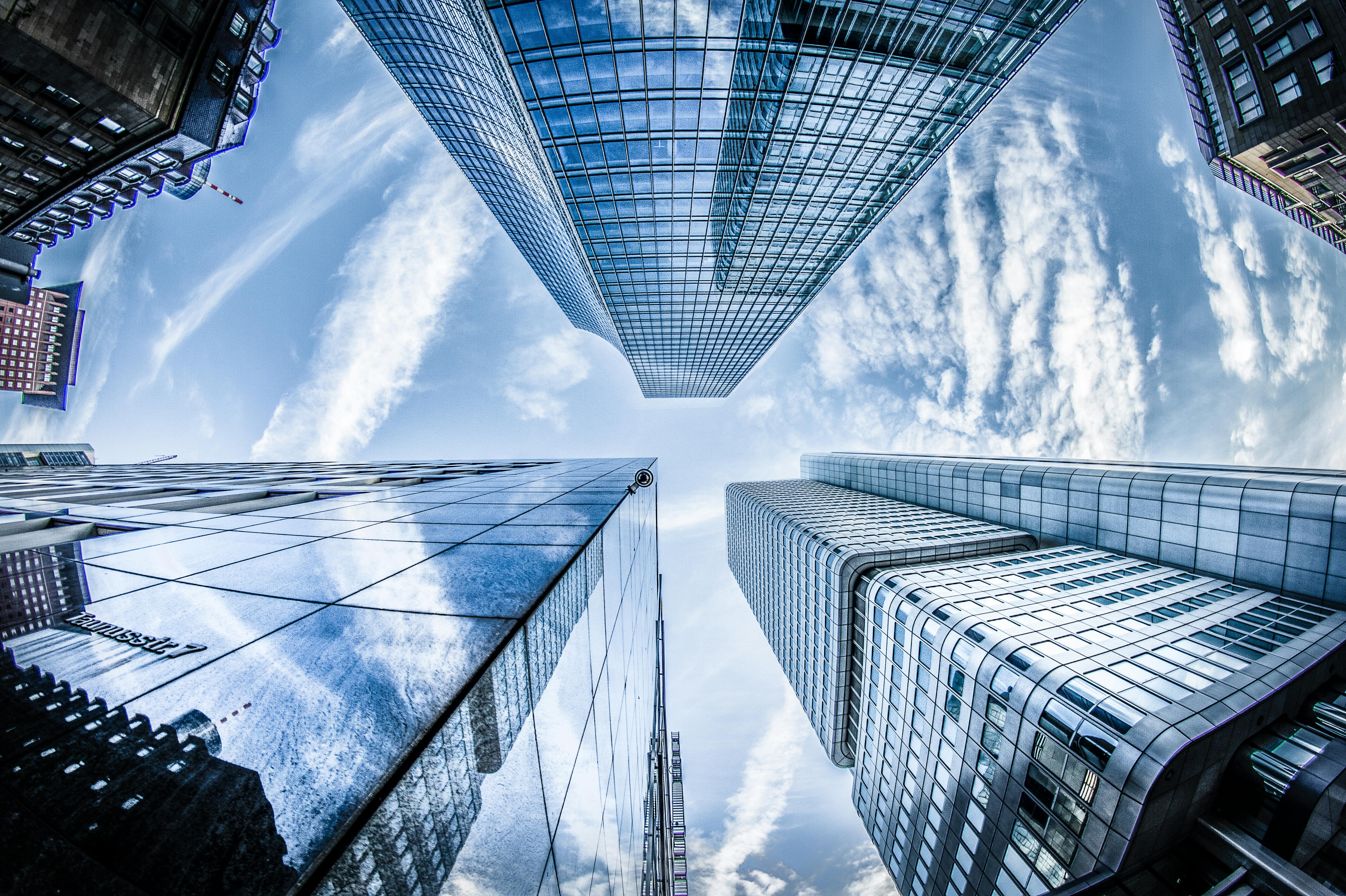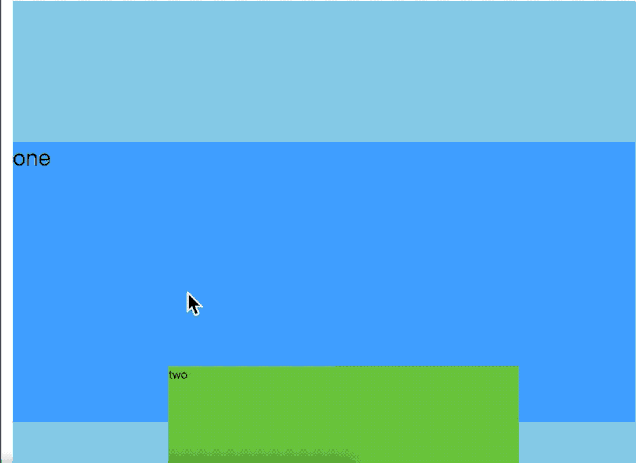滚动视差让你不相信“眼见为实”
引言
视差滚动(Parallax Scrolling)是指让多层背景以不同的速度移动,形成立体的运动效果。
其实,这项技术早在 2013 年就已经开始在一些国外的网站中得到了大量的应用。由于它给网站带来了非常出色的视觉体验,现在已经有数不胜数的网站应用了这项技术。
我是在最近的项目中用到了这块,觉得有必要整理一下。本文主要是简单的介绍一下什么是视差滚动,实现方式以及如何在现有框架(vue/react)中使用视差滚动。
什么是视差滚动?
视差效果, 最初是一个天文术语。当我们看着繁星点点的天空时,较远的恒星运动较慢,而较近的恒星运动较快。当我们坐在车里看着窗外时,我们会有相同的感觉。远处的山脉似乎没有动,附近的稻田很快过去了。许多游戏使用视差效果来增加场景的三维度。说的简单点就是,滚动屏幕时,网页中元素的位置会发生变化。但是不同的元素位置变化的速度不同,导致网页中产生分层元素的错觉。
看完上面这段,相信你对视差滚动的概念已经有了一个初步的了解。下面让我们先来看一下如何用 css 来实现视差滚动。
css 实现
css 中主要有两种实现方式:分别是通过background-attachment: fixed和transform: translate3d来实现,下面让我们看一下具体的实现方式:
background-attachment: fixed
平时业务开发中可能不太会用到background-attachment,让我们先来认识一下它。
background-attachment CSS 属性决定背景图像的位置是在视口内固定,还是随着包含它的区块滚动。
它一共有三个属性:
fixed: 键字表示背景相对于视口固定。即使一个元素拥有滚动机制,背景也不会随着元素的内容滚动。local: 此关键字表示背景相对于元素的内容固定。如果一个元素拥有滚动机制,背景将会随着元素的内容滚动。scroll: 此关键字表示背景相对于元素本身固定, 而不是随着它的内容滚动。我们使用 background-attachment: fixed 来实现视差滚动,看一下示例:
// html
1
2
3
4
5
6
7
// css
$img1: 'https://images.pexels.com/photos/1097491/pexels-photo-1097491.jpeg';
$img2: 'https://images.pexels.com/photos/2437299/pexels-photo-2437299.jpeg';
$img3: 'https://images.pexels.com/photos/1005417/pexels-photo-1005417.jpeg';
div {
height: 100vh;
background: rgba(0, 0, 0, .7);
color: #fff;
line-height: 100vh;
text-align: center;
font-size: 20vh;
}
.a-img1 {
background-image: url($img1);
background-attachment: fixed;
background-size: cover;
background-position: center center;
}
.a-img2 {
background-image: url($img2);
background-attachment: fixed;
background-size: cover;
background-position: center center;
}
.a-img3 {
background-image: url($img3);
background-attachment: fixed;
background-size: cover;
background-position: center center;
}
效果如下:
当然,你可以直接去这里查看:https://codepen.io/jack-cool/pen/MWYogYQ
transform: translate3d
同样,让我们先来看一下两个概念transform和perspective
transform: css3 属性,可以对元素进行变换(2d/3d),包括平移 translate,旋转 rotate,缩放 scale,等等perspective: css3 属性,当元素涉及 3d 变换时,perspective 可以定义我们眼睛看到的 3d 立体效果,即空间感。
先来看一下示例:
// html
one
two
three
// css
html {
overflow: hidden;
height: 100%
}
body {
perspective: 1px;
transform-style: preserve-3d;
height: 100%;
overflow-y: scroll;
overflow-x: hidden;
}
#app{
width: 100vw;
height:200vh;
background:skyblue;
padding-top:100px;
}
.one{
width:500px;
height:200px;
background:#409eff;
transform: translateZ(0px);
margin-bottom: 50px;
}
.two{
width:500px;
height:200px;
background:#67c23a;
transform: translateZ(-1px);
margin-bottom: 150px;
}
.three{
width:500px;
height:200px;
background:#e6a23c;
transform: translateZ(-2px);
margin-bottom: 150px;
}
效果如下:
当然,你可以直接去这里查看:https://codepen.io/jack-cool/pen/zYxzOpb
这里解释下使用transform: translate3d来实现视差滚动的原理:
1、给容器设置上transform-style: preserve-3d和perspective: xpx,那么处于这个容器下的子元素就会处于 3D 空间中;
2、给子元素分别设置不同的transform: translateZ(),这时不同子元素在 3D Z 轴方向距离屏幕的距离也就不一样;
3、滚动滚动条,由于子元素设置了不同的transform: translateZ(),那么他们滚动的上下距离translateY相对屏幕(我们的眼睛),也是不一样的,这就达到了滚动视差的效果。
总结下来就是: 父容器设置transform-style: preserve-3d和perspective: xpx,子元素设置不同的transform: translateZ()
看完了用 css 实现滚动视差的两种方式,下面让我们看下如何在现有框架(vue/react)中来应用滚动视差。
vue 或 react 中使用
react 中使用
在 react 中使用可以采用react-parallax,代码示例:
import React from "react";
import { render } from "react-dom";
import { Parallax } from "react-parallax";
import Introduction from "./Introduction";
const styles = {
fontFamily: "sans-serif",
textAlign: "center"
};
const insideStyles = {
background: "white",
padding: 20,
position: "absolute",
top: "50%",
left: "50%",
transform: "translate(-50%,-50%)"
};
const image1 =
"https://images.pexels.com/photos/830891/pexels-photo-830891.jpeg";
const image2 =
"https://images.pexels.com/photos/1236701/pexels-photo-1236701.jpeg";
const image3 =
"https://images.pexels.com/photos/3210189/pexels-photo-3210189.jpeg";
const image4 =
"https://images.pexels.com/photos/2437299/pexels-photo-2437299.jpeg";
const App = () => (
HTML inside the parallax
| | |
Dynamic Blur
| | |
Reverse direction
| | |
(
)}
>
renderProp
{"\u2728"}
);
render(效果如下:
当然,更多细节可以查看:https://codesandbox.io/s/react-parallax-zw5go
vue 中使用
在 vue 中使用可以采用vue-parallaxy,代码示例:
Scroll down ⬇
Parallax Effect

Parallax fixed position

效果如下:
当然,更多细节可以查看: https://codesandbox.io/s/vue-parallaxjs-ljh9g

